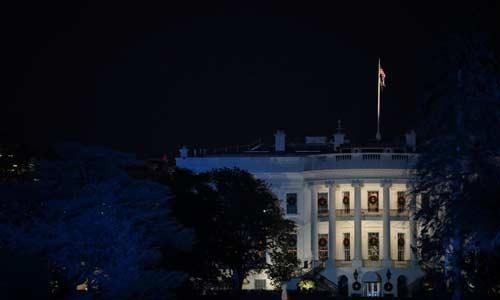The United States is considering new military uses of space, including stationing weapons in space and attacking objects in space. While space has long been militarized—hosting communications, surveillance, and navigation satellites to support military operations—it is not yet weaponized.
What are Space Weapons?
This term commonly refers to:
(1) Any weapons (whether land-, sea-, or air-based) able to damage a satellite or interfere with its functioning. These weapons are called anti-satellite (or ASAT) weapons. Weapons that interfere with a satellite's ground stations or ground-based communications receivers are typically not considered ASAT weapons.
(2) Any space-based weapons intended to attack targets in space or on the ground. These weapons include space-based ballistic missile defense interceptors and ground-attack weapons.
Missions for Space Weapons
The revived U.S. interest in space weapons is due in part to the influence of high-level officials, such as the George W. Bush administration's Secretary of Defense Donald Rumsfeld, coupled with an increased awareness by the military of the utility of space assets. The latter has led to a desire to protect U.S. space capabilities, and to be able to deny the use of similar capabilities to potential adversaries in the event of conflict.
Satellites can be tracked from the ground, and are inherently vulnerable to various kinds of attack from both the ground and from space. While a common rationale given for developing space weapons is to defend U.S. satellites, for a host of practical and technical reasons space-based weapons cannot be relied upon to protect satellites. Instead, the primary mission of space weapons is offensive: attacking the satellites of adversaries.
Two additional missions being discussed for space weapons are "boost-phase" missile defense and attacking ground targets. The latter mission, while frequently discussed, does not appear to be a priority for the U.S. military in part because such weapons are much more expensive than ground-based alternatives.
Space-based Missile Defense: Technical Shortcomings
A space-based boost-phase missile defense system is intended to intercept attacking missiles while the missiles' engines are still burning. To reach attacking missiles very quickly, space-based interceptors (SBIs) must be stationed in lowaltitude orbits. However, in these orbits SBIs move rapidly with respect to the ground and cannot stay over any one location. To keep at least one satellite over a missile launch site at all times, many SBIs would have to be in orbit. In a 2003 study, the American Physical Society showed that many hundreds or thousands of SBIs would be required in orbit to provide global coverage against ballistic missiles. The study also showed that given the technology expected to be available for the next decade, each SBI would weigh a ton or more. As a result of these factors, deploying such a system would be hugely expensive.
Even if this system were in place, it would not provide a reliable defense. Since the SBIs would follow predictable orbits and travel at low altitude, they would be vulnerable to attack by inexpensive, short-range missiles. Only those interceptors close enough to a missile's launch site could reach the missile in time to destroy it, so by removing those interceptors an attacker could essentially create a hole in the network of SBIs and launch a missile through the defense. Also, since only one or two SBIs would be over a missile's launch site at any time, multiple missile launches from the same location could overwhelm the system.
The Space Test Bed: An ASAT Threat
Because of its high cost and vulnerabilities, the United States is unlikely to build a space-based missile defense system in the foreseeable future. However, the Bush administration is proposing to fund a "Space Test Bed" beginning in fiscal 2008, which would place prototype SBIs and other weapons in orbit. While small numbers of SBIs would not provide a missile defense capability, if properly designed they could readily attack satellites. In addition to being able to attack satellites in low orbits, the large amount of fuel onboard SBIs could allow them to reach satellites in geosynchronous orbit in roughly an hour. Therefore, other countries would see even small numbers of these weapons as a significant ASAT threat.
Why Are Space Weapons a Concern?
Satellites play a crucial role in civil, scientific, economic, and military endeavors. With the world's largest investment in space assets, the United States has a tremendous amount to lose from deploying space weapons. Legitimizing attacks on satellites is shortsighted, since other countries will also be able to develop effective ASAT weapons, ultimately increasing the vulnerability of U.S. satellites. Developing weapons can also undermine relations and increase tensions with other countries, which could reduce cooperation needed for progress on issues such as terrorism and reduce stability during a crisis. Lastly, debris from destroyed satellites can damage other satellites, hindering the use of space for important military and civil purposes far into the future.
A Better Approach to Protecting U.S. Space Assets
Smart planning can ensure that attacks on individual satellites cannot remove key military capabilities. This includes, for example, developing the ability to rapidly replace or bypass damaged satellites, or to compensate for lost satellite functions on a regional basis by using backup systems that are not space-based. Distributing a single satellite's workload among clusters of satellites can make it more difficult for an adversary to mount a useful ASAT attack. And better space surveillance will enhance the ability to keep satellites safe from natural and man-made threats by, for example, allowing satellites to maneuver out of the way of large pieces of debris.
Additionally, the United States should work to strengthen the taboo against attacking satellites. It should cancel provocative space weapons development programs, and take an active role in international discussions to develop laws, rules of the road, and transparency measures for space, including consequences for any country that attacks satellites. Spacefaring countries have the greatest technical ability to threaten satellites, but they are also the countries with the greatest incentive to develop guidelines that safeguard the use of space.



